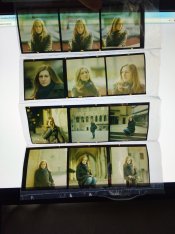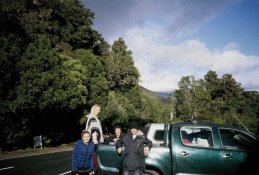wlodekmj
Member
"Aventurine glass" is what glassmakers in Venice used to call glass that had gone yellow because of a misadventure. So "Aventurine film" would be film that has gone yellow when it was not intended to.
Aviphot is a colour reversal film sold by Agfa for aerial photography. It is purchased from Agfa in bulk by companies who cut it to smaller sizes and sell it as 35mm, 120 and movie film. (Wittnerchrome 200D, Rolleichrome CR200, Lomochrome X-Pro 200, Crossbird, maybe ReraChrome 127 too.) It is based on Agfa's RSX II 200 film, but is on a polyester base. Some users say this a wonderful film, but many others find it shows a strong yellow cast.
I have just posted about this yellowing in the thread titled "Color correction for Rollei Digibase CR200?" and I am starting this thread specifically to discuss ways to avoid that yellowing. So I have given it the title "Avoiding Aventurine Aviphot".
My post suggested: 1/ make sure the film has been stored well, 2/ load it in low light, 3/ be aware that in warm sunlight it gives very yellow colours, 4/ process it very soon after exposure. In other words, understand the film, and treat it like a professional film (store cold, shoot the whole roll in one session, process promptly). Does anyone have comments to add, please?
Aviphot is a colour reversal film sold by Agfa for aerial photography. It is purchased from Agfa in bulk by companies who cut it to smaller sizes and sell it as 35mm, 120 and movie film. (Wittnerchrome 200D, Rolleichrome CR200, Lomochrome X-Pro 200, Crossbird, maybe ReraChrome 127 too.) It is based on Agfa's RSX II 200 film, but is on a polyester base. Some users say this a wonderful film, but many others find it shows a strong yellow cast.
I have just posted about this yellowing in the thread titled "Color correction for Rollei Digibase CR200?" and I am starting this thread specifically to discuss ways to avoid that yellowing. So I have given it the title "Avoiding Aventurine Aviphot".
My post suggested: 1/ make sure the film has been stored well, 2/ load it in low light, 3/ be aware that in warm sunlight it gives very yellow colours, 4/ process it very soon after exposure. In other words, understand the film, and treat it like a professional film (store cold, shoot the whole roll in one session, process promptly). Does anyone have comments to add, please?
















 !
!